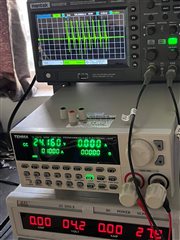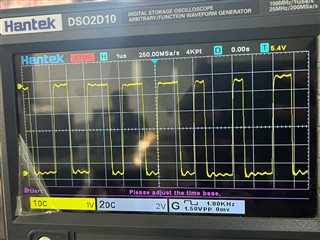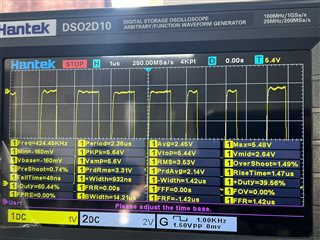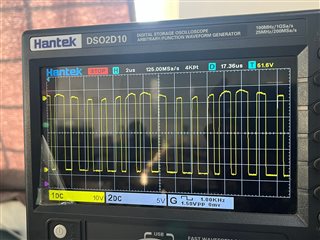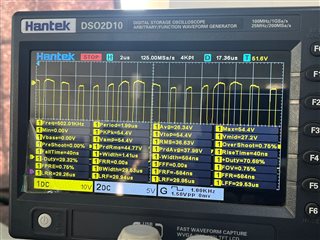Hi Team,
I am using the LM3481MMX/NOPB in a SEPIC mode configured for the following values and got the board cleared and approved in a previous thread:
e2e.ti.com/.../lm3481-schematic-review
Vin: 21 to 29.6V
Vout:24V
Iout:1 A
Inductor used: Sumida 0624CDMCCDS-220MC (22uH/ Isat=3.2A)
For the switching mosfet, we used a CSD18511Q5AT and observed that for higher voltages and at NO-LOAD condition, the MOSFET heated up to about 100 deg.C at around 25V. We did not notice this at first and observed it after we did a load test at 1A and ended up damaging the MOSFET and observed the temperature rise after replacing it. Checked the switching frequency at the gate and this never changes. Also at around 22.6V and NO-LOAD the board started drawing about 50mA and as the voltage kept increasing it spiked up to about 200mA from the supply.
What could be the possible issue for this amount of heating and drawing current at NO-LOAD? Also please suggest possible changes and diagnosis.





